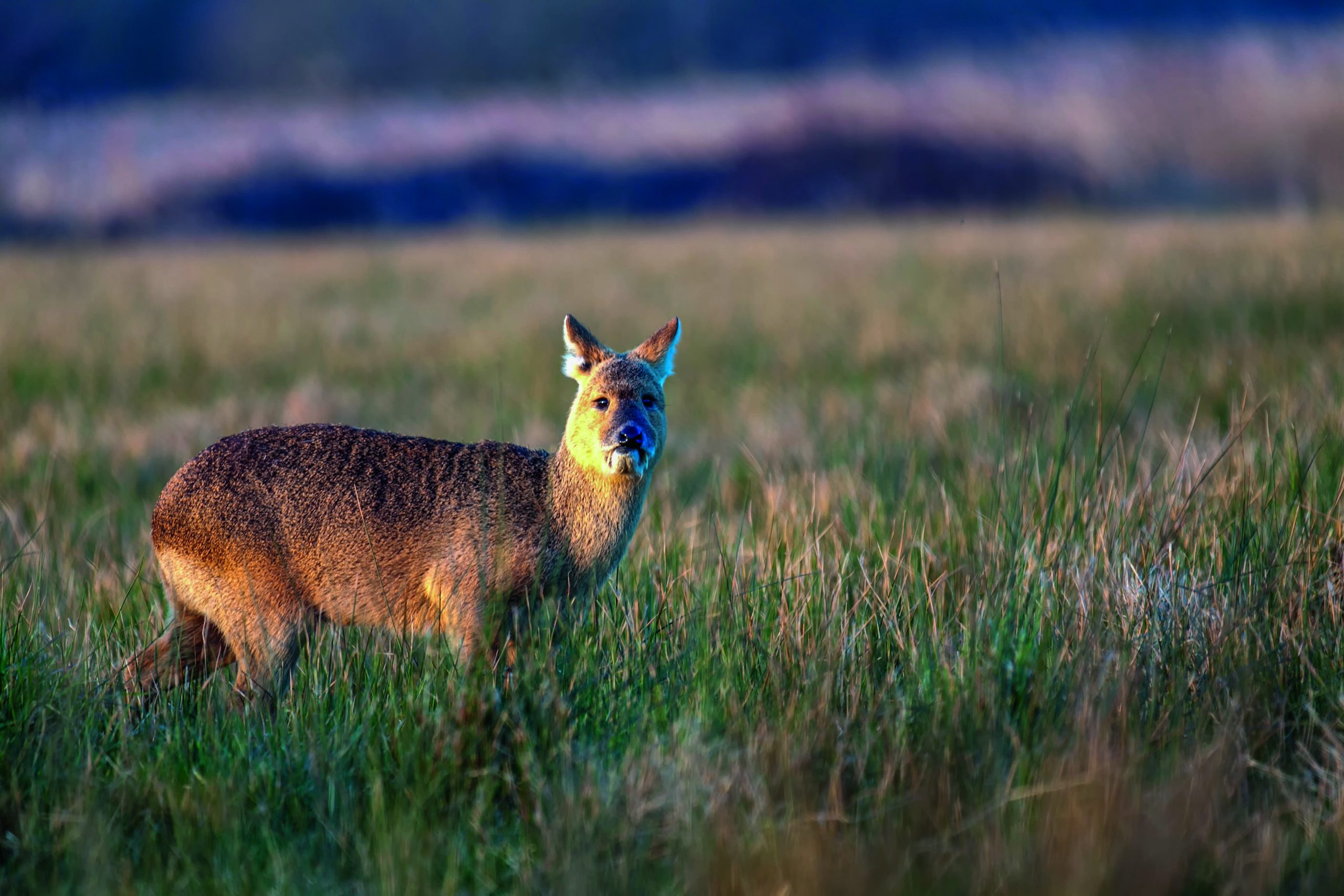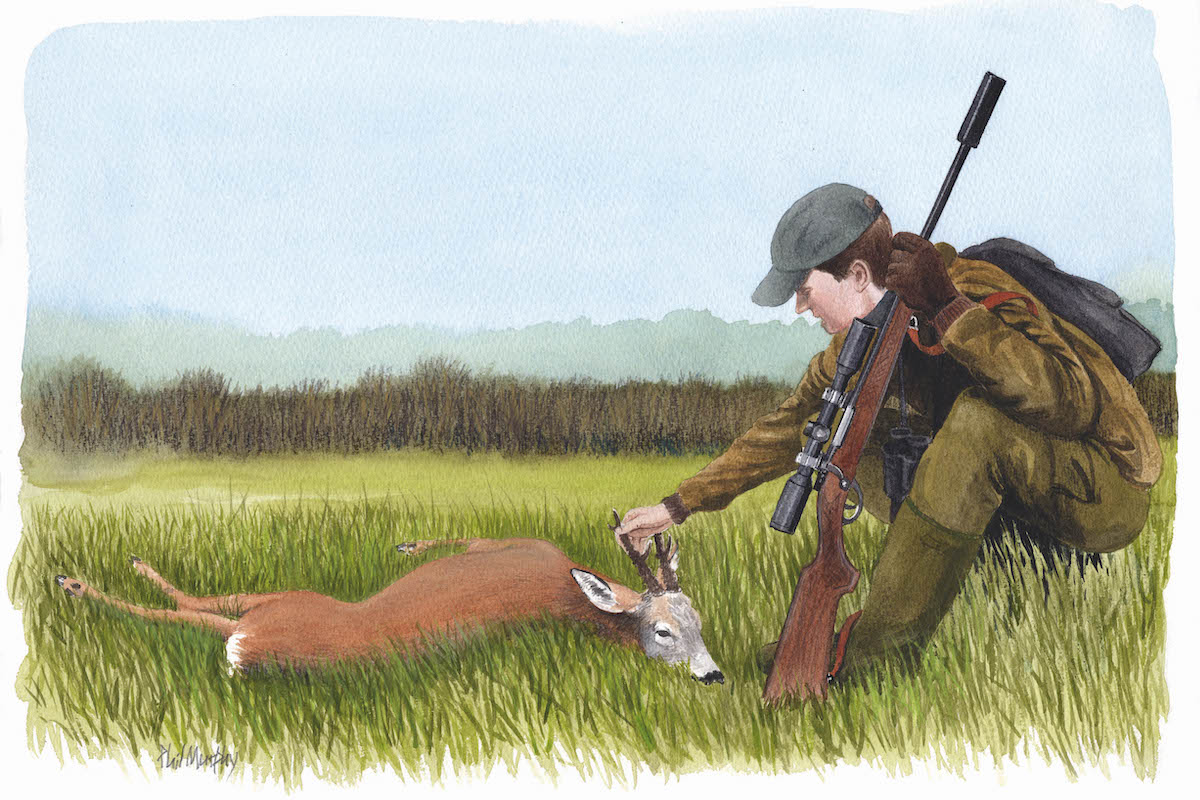Chinese water deer – an end of season opportunity
Chinese water deer and muntjac abound and the end of the season is an ideal time to fill up the freezer before the cover grows too high

The Chinese water deer in the middle of the field looks to be a big animal, with enormous tusks
Roost shooting for pigeons was poor this February. There was never a good wind when you wanted it and the numbers of pigeons were down in North Norfolk — or so it seemed. I would like to know how others have fared.
I did have one good flight of 14, which was perfect to make a big pie of the breasts cut into strips mixed with pork belly in a rich, herby gravy. The local butcher gives me fresh beef suet and the pie is made with a suet pastry top. Do try it.
When I was a child, there were no deer along the North Norfolk coast; now they are in every field and hedgerow. At this time of the year, it’s great to get stuck into the Chinese water deer and muntjac populations before the cover gets up.
I was stalking on a warm but windy evening a couple of weeks ago and, glassing a rape field, saw a Chinese water deer lying down in the middle of a field. All but its back showed; occasionally its head came up as it ate and had a look around. I could see it had one good ear and one floppy ear split in two down from the tip.
It looked like a big animal. Stalking into a position where I could get a shot at about 120 yards, I took the shot on sticks but missed over its neck. Up the deer jumped. As I watched him bound away, I could see he had enormous tusks. Cursing the wind, I went home and vowed I would be back.
The following evening found me glassing that same field and nothing was to be seen. Cunning was needed. Stalking against the wind up to the next hedge line, I peeped through and saw an animal further up the hedge feeding in a strip of old game cover. Aha! Through the glasses the flopping left ear was clearly visible.
Creeping along the downwind side of the hedge to within 60 yards, I made the shot from the prone position and didn’t make the same mistake. He had splendid tusks which deserve to be judged.
I think it’s a bit silly that the Chinese season ends March. It could go on for a month more and then open again when the fields are cut between August and September. But that’s only my opinion and the need to refill the freezer.
Migration
North Norfolk is well known as a Mecca for migratory birds and the coming of spring brings in another migration — bird nuts. There are two ornithologists, Graham and Eddy, who position themselves down at the end of Cockle Drove where it meets and overlooks the saltings.
It’s a wonderful spot at any time of the year and there they are, usually in the evenings and in any weather, come hell or high water. I see them either when I’m coming off the marsh from wildfowling or collecting samphire or cockling or when I’m walking the dogs. They are charming and we stand and talk about what the birds are doing at that time of the year.
They have the most amazing equipment — which is so powerful you can see a dunlin’s eye at half a mile — and they let me have a look. We watched a pallid harrier or a peregrine catching a woodcock and a merlin harassing pipits. Every evening, two or three barn owls float about along the edge of the marsh, within a stone’s throw of where the twitchers stand; a thrush was singing wonderfully one night in the hedge above them.
They are so peaceful that they are part of that bit of ground where the land meets the sea and the sea meets the sky. Graham and Eddy are very different from most bird nuts who are generally a sceptical and untrusting bunch who hate guns and dogs and never want to talk about what birds are in and what birds have disappeared. Unlike those types, Graham and Eddy are good people.








